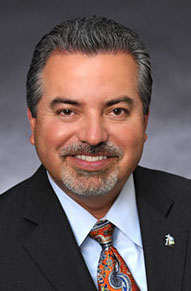


When Brooks Air Force Base was shuttered in 2001 as part of the federal Base Realignment and Closure (BRAC), the U.S. Congress, the State of Texas and the City of San Antonio established Brooks City Base to repurpose the base and replenish lost military jobs. Under the ownership and management of the Brooks Development Authority (BDA), the campus began its conversion from military base to urban center.
In 14 years, the community has become a model for progressive development, attracting 26 businesses employing more than 4,000 people. More private sector jobs are available at Brooks City Base today than in the Air Force’s heyday. Several retail stores in the area, including Best Buy and James Avery, are among the leading franchises in the entire city. But the real work is only beginning. Under the leadership of President & CEO Leo Gomez, Brooks Development Authority has bigger goals in sight.
more than 4,000 people. More private sector jobs are available at Brooks City Base today than in the Air Force’s heyday. Several retail stores in the area, including Best Buy and James Avery, are among the leading franchises in the entire city. But the real work is only beginning. Under the leadership of President & CEO Leo Gomez, Brooks Development Authority has bigger goals in sight.
“We want to help transform the South Side of San Antonio,” said Gomez. “For years, residents have had to travel north to shop at major retailers, dine at their favorite restaurants or go to work. By creating a vibrant mixed-use community and attracting choice employers that pay high wages to this area, we are allowing people to live, work, learn and play – all at Brooks City Base.”
Gomez’s commitment stems from his strong roots in San Antonio’s south side community. He built his first home in the Brookside neighborhood, just south of Brooks City Base, and has been entrenched in San Antonio’s business circles for years, having previously worked in leadership positions with Spurs Sports & Entertainment and Toyota Manufacturing.
Under Gomez’s direction, Brooks Development Authority partnered with planners Live Oak Gottesman and architects Overland Partners to create a fresh vision for the community. Completed in 2014, the publically-vetted Brooks City Base Land Use Plan strikes a balance between culture, economy and ecology on the 1,308-acre campus.
“Brooks City Base is on track to be one of the most innovative, master-planned communities, not only in Texas, but in the entire country,” said Gomez. “Because San Antonio is one of the largest, most diverse cities in the nation, we are well positioned to create opportunities for people from a variety of backgrounds.”
The Brooks Development Authority is using out-of-the-box approaches to bring the ideas of the land use plan to life. To protect the rich history and military character of the campus, the organization worked with the City of San Antonio to add provisions to the city’s historic guidelines to preserve mid-century modern buildings on “The Hill,” once home to the historic School of Aerospace Medicine where President John F. Kennedy dedicated several buildings in his last official act as president in 1963.
The Brooks City Base EB-5 Regional Center offers qualified foreign investors the opportunity to gain permanent residency for themselves and their families in the United States. Through the program, the BDA hopes to encourage investment in the community from countries including Brazil, China and Nigeria.
Brooks City Base is also capitalizing on its proximity to the Eagle Ford Shale region. This large swath of South Texas has become one of the most actively drilled areas for oil and natural gas in the country. As one of the closest urban centers to the north, Brooks City Base offers housing, office space, dining and shopping to the many that have come to live and work in the shale boom.
Already home to a diverse group of tenants representing the fields of healthcare, pharmaceuticals, bioscience, information technology, education and civil service, Brooks City Base is ripe for new development in the coming years. The University of Incarnate Word’s School of Osteopathic Medicine is scheduled to open on campus in 2017, and Embassy Suites by Hilton recently announced plans for a new full-service hotel and conference center, making it the only conference and event center south of downtown San Antonio and north of Corpus Christi or McAllen.
With Gomez at the helm, attractive financial incentives and more than 700 acres of developable land still remaining, Brooks’ legacy of innovation and world-class opportunity is only just beginning.